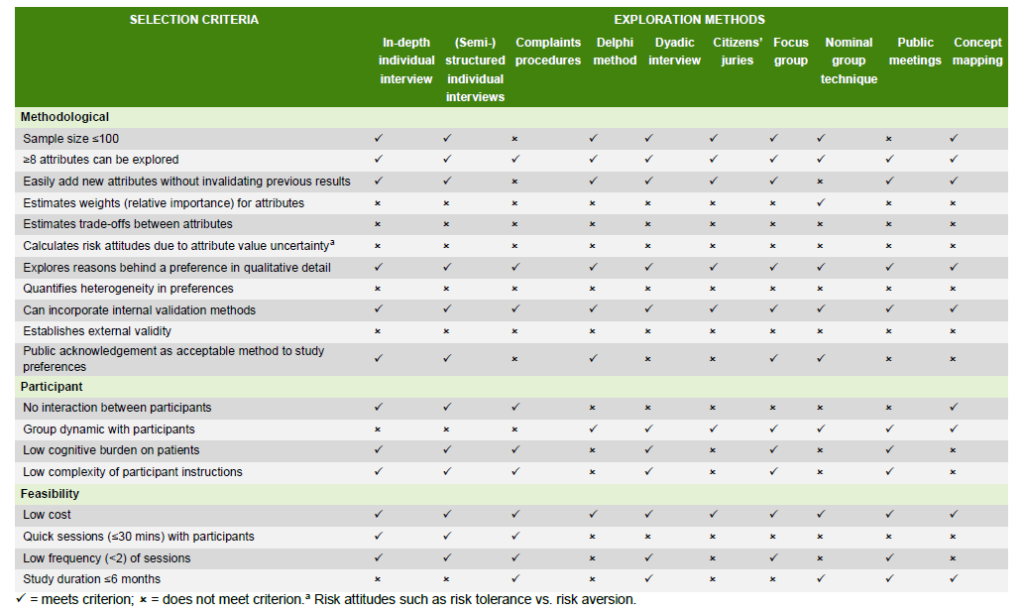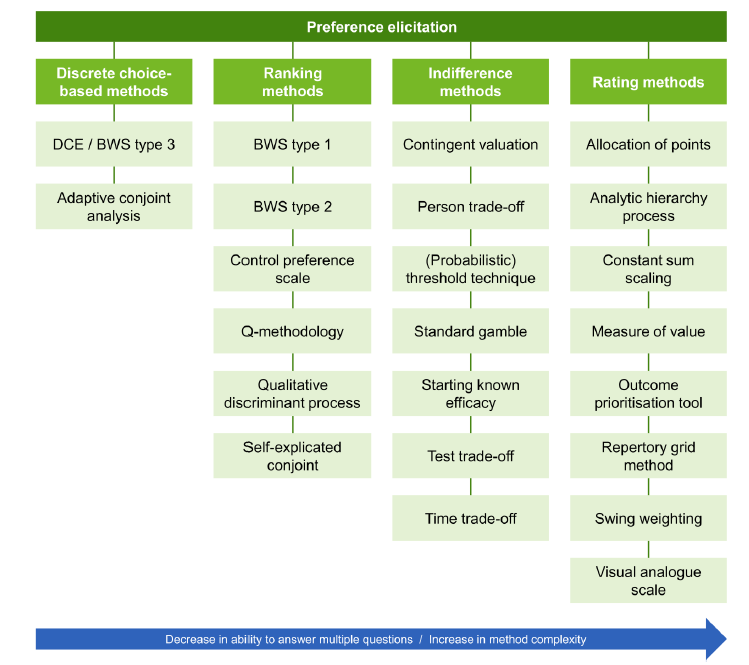Affected person preferences must be an important a part of well being care decisionmaking. Nonetheless, third events typically make selections for sufferers. Physicians make selections for sufferers attributable to uneven info (i.e., physicians are consultants; sufferers usually should not). Payers make selections for sufferers since–in most developed international locations–third-party cost cowl a lot of the price. Furthermore, in some circumstances caregivers may additionally make selections. Thus, whereas in most markets the patron makes the choice and the acquisition primarily based on their very own preferences, in well being care affected person preferences should not all the time central to the decision-making course of.
The IMI PREFER initiative aimed to supply steering on how affected person preferences will be included into decisionmaking. Their almost 300 web page report has a wide range of suggestions for incorporating affected person preferences. Listed below are some key takeaways:
When to include affected person preferences?

Are there circumstances the place affected person preferences are much less more likely to be helpful?
Sure, If related endpoints, tradeoffs are well-known and there are few uncertainties, then the worth of conducting a affected person choice survey may very well be much less.

What are the steps wanted to conduct a affected person choice research?
The PREFER strategy attracts from Overbeeke et al. 2019 and describes the steps/phases as proven beneath.

What’s choice exploration and what methodologies can be found to conduct it?
In-depth exploration of the affected person perspective relating to their illness, therapies, and the
significance of outcomes or attributes is usually performed utilizing qualitative strategies. These qualitative strategies are sometimes best-suited for early phases within the medical product life cycle. Related strategies embody:


How can I quantify these preferences?
The PREFER methodology lists various kinds of strategies from Soekhai et al. (2019). The efficiency matrix to judge these quantitative elicitation strategies was tailored from Whichello et al, 2020.


There may be way more nice info within the suggestions report right here.


